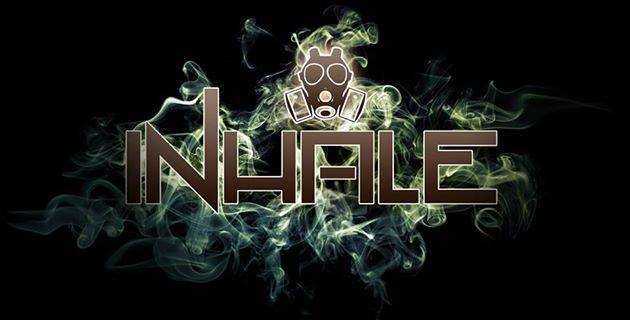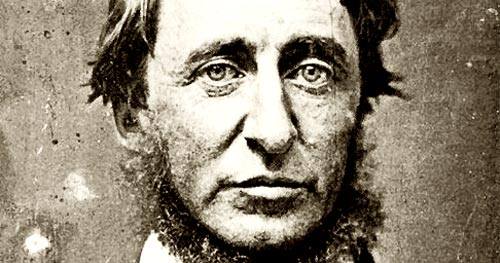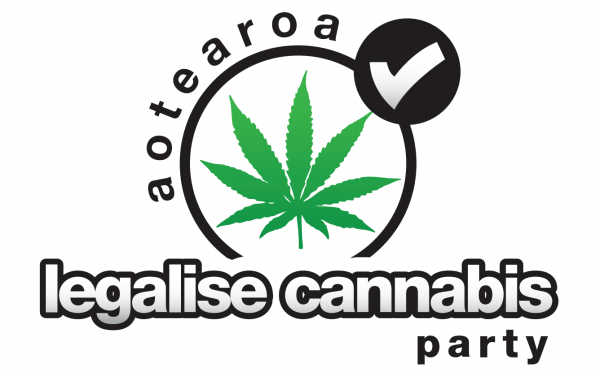I N H A L E
Rulers bear the sword for a reason
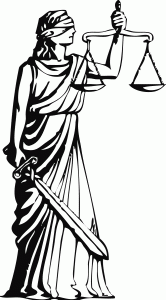
Romans 13:4
For the one in authority is God’s servant for your good. But if you do wrong, be afraid, for rulers do not bear the sword for no reason. They are God’s servants, agents of wrath to bring punishment on the wrongdoer.
Governments that serve God well should be agents of wrath that bring punishment on wrongdoers.
Christians should be supporting/advocating government punishment of wrongdoers. As I write this I think this doctrine is too obvious to mention and uncontentious… but I have seen that some Christians think justice has been replaced with “not judging”, forgiveness and mercy. And many people think the purpose of a justice system should be to rehabilitate and/or protect citizens.
Mercy and forgiveness have their place but these are, I believe, an individual’s prerogative – in the same way that generosity is an individuals prerogative. It is not virtuous when the state gives away people’s money against their wishes and neither is it virtuous when the state gives lenient punishments against a victim’s wishes. (Mercy, forgiveness and generosity by proxy are counterfeit virtues.)
Significant disagreements amongst Christians occur when we consider which wrongdoings should be punished. Wrongdoings can be classified as against God (e.g. worshipping other gods, disobedience), against self (e.g. drunkenness, greed, laziness, pride) or against others (e.g. murder, theft, assault).
Wrongdoings against God or self are nobody else’s business – those wrongdoings are between that person and God – as Paul said “Who am I to judge another man’s servant?”
The reason rulers bear the sword is to punish wrongdoers – specifically those who do wrongs against others.
(I thought I was finished… but I guess I’d better add that all punishments should be just i.e. they must not be disproportionate to the wrongdoing… eye for an eye, tooth for tooth, yadda yadda.)
No faith in Mother Earth
http://tvnz.co.nz/q-and-a-news/climate-report-jamie-whyte-do-nothing-video-5879217
What does the bible say about climate change?
“Therefore I tell you, do not worry about your life, what you will eat or drink; or about your body, what you will wear. Is not life more important than food, and the body more important than clothes? Look at the birds of the air; they do not sow or reap or store away in barns, and yet your heavenly Father feeds them. Are you not much more valuable than they? Who of you by worrying can add a single hour to his life ? “And why do you worry about clothes? See how the lilies of the field grow. They do not labor or spin. Yet I tell you that not even Solomon in all his splendor was dressed like one of these. If that is how God clothes the grass of the field, which is here today and tomorrow is thrown into the fire, will he not much more clothe you, O you of little faith? So do not worry, saying, ‘What shall we eat?’ or ‘What shall we drink?’ or ‘What shall we wear?’ For the pagans run after all these things, and your heavenly Father knows that you need them. But seek first his kingdom and his righteousness, and all these things will be given to you as well. Therefore do not worry about tomorrow, for tomorrow will worry about itself. Each day has enough trouble of its own.” -Matt 6:25-34
“While the earth remaineth, seedtime and harvest, and cold and heat, and summer and winter, and day and night shall not cease.” -Genesis 8:22
After the fall of man, the days on earth became numbered. Not because of man made CO2 emmisions or over population of the human race, but because of the sinful nature of men. You can ride a push bike, plant trees, build wind mills and solar panels all you like if you want to save humanity. If you want real salvation, Jesus is your only hope! Amen.
How exactly do the government deal with climate change? We have an ETS which is taxing on businesses and consumers. The cost of an ETS essentially means, less business and subsequently less employment. Also means higher electricity and fuel prices which contributes to the high cost of living. Do the people of NZ really want this? As Jamie Whytt said; the people of NZ arn’t worried, we should just do nothing.
Anti-Gun, Anti-Hunting, Nature Worshipping Meat Heads.

Facebook Users are Outraged that Stephen Spielberg Killed a Triceratops
Read about it >>>Here<<<
And These Freaks actually get to vote!
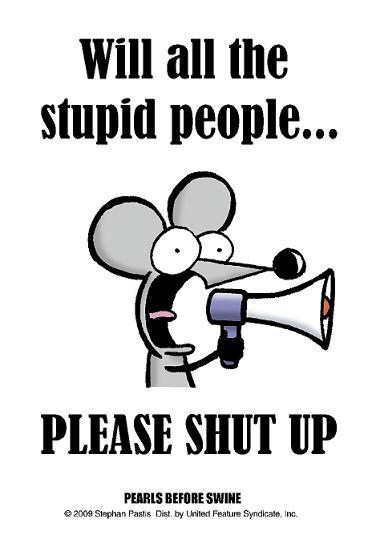
Even voting for the right is doing nothing for it
It’s Henry David Thoreau‘s birthday today. 🙂
Disobedience is the true foundation of liberty. The obedient must be slaves.
I heartily accept the motto,—“That government is best which governs least;” and I should like to see it acted up to more rapidly and systematically. Carried out, it finally amounts to this, which I also believe,—“That government is best which governs not at all;” and when men are prepared for it, that will be the kind of government which they will have. Government is at best but an expedient; but most governments are usually, and all governments are sometimes, inexpedient.
All voting is a sort of gaming, like checkers or back gammon, with a slight moral tinge to it, a playing with right and wrong, with moral questions; and betting naturally accompanies it. The character of the voters is not staked. I cast my vote, perchance, as I think right; but I am not vitally concerned that that right should prevail. I am willing to leave it to the majority. Its obligation, therefore, never exceeds that of expediency. Even voting for the right is doing nothing for it. It is only expressing to men feebly your desire that it should prevail. A wise man will not leave the right to the mercy of chance, nor wish it to prevail through the power of the majority. There is but little virtue in the action of masses of men.
If the machine of government is of such a nature that it requires you to be the agent of injustice to another, then, I say, break the law.
Of 10 highest IQ’s on earth, at least 8 are Theists, at least 6 are Christians: Examiner.com.
Andrew Magdy Kamal – apparently the highest IQ ever recorded, at 231.734. This was accomplished last year (2013) just before he turned 17. This includes an adjustment made for his age (which is done routinely for minors), so only time will tell if he maintains his position, but he is listed in Record Holder’s Republic for Highest IQ and Highest IQ average, and it looks pretty good. He is a he is a staunch conservative and a member of the Republican Tea Party. He is also the founder of the Coptic Orthodox Messianicans Group. Andrew Magdy Kamal hopes to use his talents and intelligence to spread the news of Messiah Yeshua (Jesus Christ) his hero, and he lives in Michigan.
Abdessellam Jelloul – apparently the highest IQ ever scored by an adult in the “advanced IQ test” was by Jelloul, who scored an adult IQ of 198. This was in a 2012 test which included 13 dimensions of intelligence (analytical, spatial, logical, memory, musical, linguistic, philosophical, moral, spiritual, interpersonal, intra-personal, bodily and naturalist). Unlike other tests, the advanced IQ test includes more measures that other tests cannot assess. I tweeted Mr. Jelloul a question about his beliefs in September of last year, and he graciously replied to me that he does “believe in God, a Supreme Architect of the universe” (see a screenshot of this tweet in the slideshow).
Christopher Michael Langan – has a verified IQ of at least 195. Langan achieved a perfect score on the SAT, but dropped out of Montana State University after concluding his professors weren’t qualified to teach him anything. ABC’s 20/20 measured his IQ (as an adult) to be between 195 and 210. Langan has indicated in his writings numerous that he believes in God, for example, in William Dembski’s book “Uncommon Dissent”, he wrote: “…since Biblical accounts of the genesis of our world and species are true but metaphorical, our task is to correctly decipher the metaphor in light of scientific evidence also given to us by God”.
Terence Tao – his IQ was estimated to be between 220 and 230 by the Davidson Institute when he was about ten years old. At eight years old, Tao achieved a score of 760 on the pre-1995 SAT, received a Ph.D from Princeton at 20 and at 24 became the youngest ever full professor at UCLA. I couldn’t find anything about Tao’s metaphysical views. He’s obviously a tremendous mathematician, but doesn’t seem to post much outside of mathematics.
Christopher Hirata – has a verified IQ of 225, calculated when he was in his teens. Hirata skipped middle school, and at 16 was working with NASA on a project exploring the possibility of colonizing Mars. The Daily Princetonian, Princeton’s student paper, where Hirata began attending for his PhD in Astrophysics at 18, reported that his IQ is around 225. Hirata posted the following to his Facebook on October 31, 2013: “Today’s experience: saying the Lord’s prayer with a homeless couple on Colorado Boulevard. It may not feed or shelter them, but I hope that it made a difference in their lives.” So he is clearly both a Theist and a Christian.
Evangelos Katsioulis – has apparently scored a 198 as an adult. Katsioulis is a Greek Doctor/Psychiatrist/Philosopher who has publicly referred to his belief in human souls several times. For example, he did a lecture in 2008 called “BODY AND SOUL”, and made clear that he wasn’t speaking metaphorically in it with lines like: “The soul is not the body. It is not the flesh. It is the spirit.” He is apparently a follower of a strand of Christianity influenced by Teilhard de Chardin.
Rick Rosner – has apparently scored a 192 as an adult, after years of honing his IQ test-taking skills. Has been a writer for the Jimmy Kimmel Show, and appeared on “So You Want to be A Millionaire”. Rosner denied that he was an atheist on Twitter, after an inquiry. He also retweeted this Einstein quote: “God does not care about our mathematical difficulties. He integrates empirically” and in answer to the question “You know there’s a God?” he answered “Maybe. Suspect there’s an infinity of gods”.
Mislav Predavec – has apparently scored a 192 as an adult. [Update – I initially had the wrong quote linked here]. His Christianity can easily be confirmed by a beautiful response he wrote to a friend who had become a Christian in one of the groups he belongs to and which was posted online:
“David, I am so glad hearing good news about your convalescence, and more about your enlightenment, you are aware now that your suffer and pain, your giftedness and sense are a part of plan. Truly, all this can´t exist without being leading it intentionally. Atheistic explanation that everything is accidental progress is full of holes. Stay well my friend.
Mislav”
Gary Kasparov – is alleged to have an IQ of 190. He was perhaps the most universally attested-to as a top-shelf intellect, so it was unthinkable to leave him off of this list. In 2003 Kasparov played to a draw against a chess computer that could calculate three million positions per second. He is considered by many to be the greatest chess player of all time. Kasparov has described himself as a “self-appointed Christian”
Kenneth Ferrell – has apparently scored a 190 as an adult. If I have located the right Kenneth Ferrell online, it’s abundantly clear from his own words that he’s a Christian. Since I’m not sure, I didn’t include him in my count of believers.
So you can see that the brightest of the bright have not foreclosed on the possibility of the existence of an Intelligent Designer. Juxtaposed with the fact that most Scientists are not atheists, I’d say that the Appeal to Authority on which atheist debators have long relied has dissolved.
Steve J. Williams is the author of What Your Atheist Professor Doesn’t Know (But Should)
Read full article >>>Here<<< Read more.... Atheism. The Philosophy of Small Minds.
Pasteur’s Law, Creation Science vs Nose Bone Atheism.
Faith, Science, and Reason. The Pomposity of Atheism.
David Berlinski—Atheism and its Scientific Pretensions
The Walls are closing in on Atheism… not Theism.
Rapturous Amazement! The Advance of Science Converts The High Priest of Atheism to Deism. A Flew.
Kings and Convicts (Part 3) Korotangi Paki’s Thug life, and road to redemption.

Because my 2nd post on this subject was so long.
I decided to chop it in half and make a 3rd post.
When I speak of ‘Redemption’, I am referring to becoming a civilised and respectful member of society with something good to contribute, rather than Spiritual salvation from the Ultimate Judgement of God.
It is very true to say that Criminal reform often follows in the wake of true Chistian conversion and faith…. Christianity being describe as ‘that most potent of moral antiseptics’ by the father of sociology, Herbert Spencer, and it is also true to say that Christianity was the major civilising influence for Cannibalistic and Savage Maori culture when the English Protestant ‘Mechanic Missionaries’ first landed in Aotearoa before this country became a British Colony… at the request of the Confederation of Maori Chiefs, whom feared conquest by the French.
The influence of the Christian missionaries is evident in their petition to King William.
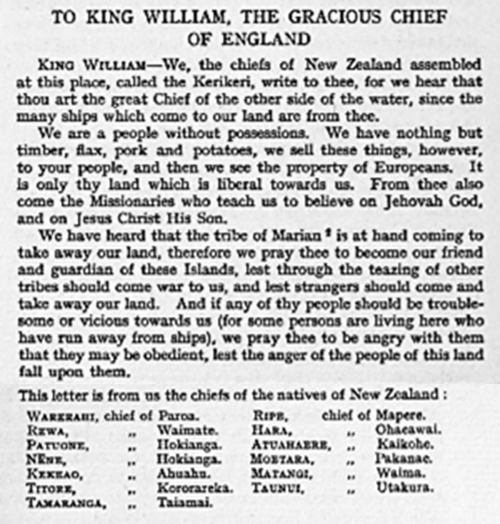
1831 Māori petition the British government
The civilising influences of Christianity aside, what follows is not about *how and why* a criminal might seek to reform, but that reform is possible, and that criminals can become valuable members of civil society.
Part One >>>Here<<< Part Two >>>Here<<< Part three is below. ****************************************************
^^^^
It has been a very bad week in the press for the Taunui Monarchy, with growing reports of more misbehaviour from the second son, including Racist ranting, and connections with the Mongrel mob, and we have herd that he was involved in a serious car crash a few years back… and yet was not convicted for that either.
I don’t think it is fair to assume the Kings son’s offending is a consequence of poor parenting, or positive proof the Monarch never bothered to try and instil healthy values in his son… it may indeed be the case.
It is certainly true in many Maori households.
Maybe the King is indeed a Bad Parent, yet it is just as likely that his sons bad behaviour has more to do with his misfit peers with whom he hangs out, than his upbringing.
Sadly many youths of our day… and a very high percentage of Maori youth embrace a delinquent lifestyle as it is a part of a Hollywood Glamorised Rebellious youth culture, and deeper still it has a lot to do with the Nihilism of our ‘age of Atheism’… on top of learning unhealthy values at home, and having Bad Role models.
The Thug life.
Korotangi Paki’s offending, and shameful behaviour no doubt springs from a combination of these things … The actions of a lost young soul who thinks that Lawlessness is cool, and struggles to find anything worth while in life.
I can relate to that. .. yet despite any of these circumstances …. and many others, Youths need to appreciate the fact that as they have become self responsible adults , that excuses for sloth, or bad behaviour simply don’t cut it…. and they must assume full responsibility for their lives and actions.
They must learn healthy values and to respect the rights and property of others.
I cant help but wonder if he had been convicted for his earlier offence , that that ‘reality pill’ could have helped him to appreciate that his High jinx juvenile delinquency comes at a cost.
Is it possible to believe that had he been convicted earlier, that he would not now be dodging punishments for more crimes?
Some kids learn quickly…. Others take decades.
I cant help but think that if I was King Tuheitia, that rather than try and save Korotangi Paki from facing the full legal consequences of his actions, the best thing that could happen to this young rebel is that he receives a conviction for these charges of Burglary and Drinking and driving, and that he is made to pay a fine, and do Periodic detention … to teach him that he is not above the law and that should he continue down this path of criminality, that he will suffer the consequences.
As for grooming the boy for the throne, i cant think of someone being less fit to rule over the tribe, than a person whom via experience has been taught that they are above the law and that the system can be manipulated!
What ought to matter to the King is not that his boy remains free from criminal conviction, but that he *Reforms his ways* Learns the lesson that Crime is not cool, or excusable, and that he grows in Character and virtue.
And being convicted for his crimes is in reality most likely to be a valuable lesson.
Some of us only learn the hard way.
If I was the king I would be very worried about the path my boy was taking, yet I would never say that my boy could *Never succeed me* if he ever received a criminal conviction…. on the contrary I would make it clear that he still has reason to hope if he ‘mans up’ and straightens up his life, and proves himself to have learned from his mistakes, and become a Man of virtue.
Indeed such a reformed person can become a very good leader of men, and a good example.
They can be better communicators to troubled youths, because they can empathise with them… and understand how their mind ticks.
They can use their personal insights … and speak from personal experience.
The reality is Maori don’t need more Pompous frauds whom are experts at ‘playing Maori’.
They do need leaders whom can guide them towards better values and ethics which are essential for Maori to learn if they are to climb out of the Dire social statistics which has resulted …. not from European colonisation, but from of an ethical crisis.
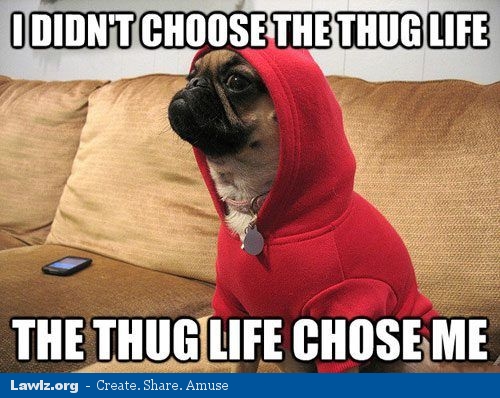
Korotangi Paki’s crimes and shameful behaviour stems from a lack of personal ethics and self responsibility…. not because he is a member of a persecuted racial minority.
The good news is that because this is so, It means the solution to his problems are not beyond his control, but are completely within his power to overcome.
It is simply a matter of him admitting to himself that he has taken a wrong path, and finding the will … the desire to become a better man.
He needs to walk away from any associates who are hell bent on Chaos and destruction, and to find new friends whom are also trying to make the most of life via virtue .
It is not an easy thing to achieve, but it is do-able.
The alternative is to travel further down the path that leads to destruction.
If the king does not give his son any hope that he can work his way out of this mess, and back into favour, that could be a burden too much to bear, and could be the factor which drives his son to destruction.
A Father’s Blessing or curse weighs a great deal upon a son, and when the boy is down… they need their fathers support to help get themselves out of the hole.
Yet the loving parent must never ‘Baby’ them… that’s not helping… that’s perpetuating the problem.
Thus I dare to challenge the common notion that convicted criminals cant make good leaders or examples.
I say that Reformed Criminals can be Great leaders and become inspirational examples to be emulated by others.
It is in reality up to Korotangi Paki what sort of Man he will eventually become… which course he chooses to navigate….
Life is not Static, nor are we slaves of circumstances, or of our genes.
As Freewill moral agents we are at all times making moral judgements, and expressing our Values.
We can learn from our mistakes and become better people, as long as we take ownership and responsibility for our actions.
I know these things from personal experience.
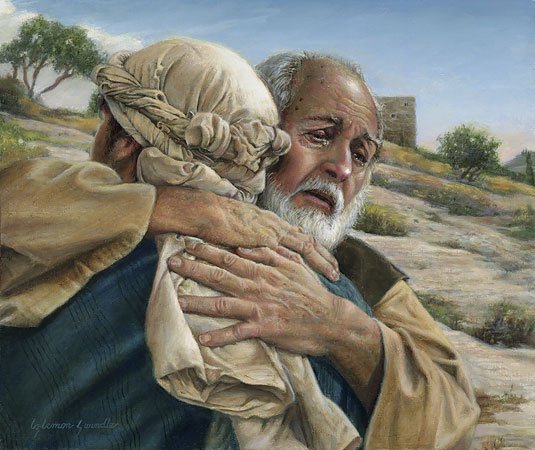
The return of the wayward (Prodigal) Son from the wilderness of the ungodly world.
>>>>>*If*<<<<< Korotangi Paki snaps out of his current folly, and begins to prove himself to be a Better, more mature person... I dont see any reason why after 7 years of truly self responsible behaviour that he should not be given a clean slate, considered to be a potential leader of the Tainui people... To er is Human, to forgive is divine. Tim Wikiriwhi.
Kings and Convicts (Part 2) The Charade.
The following is Part two of my thoughts on the recent Saga involving the criminal activities of
Korotangi Paki, the 2nd son of the Tainui King.
It is way way too long, and at some time in the future I will revise and combine both parts into a single opinion piece.
They will require a massive hatchet job.
I apologize for their cumbersome obesity.
I hope by the end of this second part that it is obvious how the first part relates to the second.
Update: I decided the best solution was to make this a 3 part series. 🙂
Part one is >>>Here<<<
Part 2 is below ....
Part 3 is >>>Here<<<

In a letter to the Judge, The Tainui King said that there is no way he would consider his son as a possible heir to his throne, if he should get criminal convictions.
It was in the light of this letter, that the Liberal Judge decided not to convict Korotangi Paki for Burglary and Drink driving being persuaded that the cost to him… should he be convicted would be far too heavy in respect to the offences.
While it is true that any penalties a court of justice imposes ought be justly proportional to the seriousness of the crime, this type of defence employed in this case is a Liberal sophistry which has gained currency in New Zealand, which is primarily used to separate and grant favours to the social elite…. most often by the likes of Sportsman and artists whom have careers or at least ambitions overseas.
Because many countries bar entry to convicts, this defence has been successfully employed to avoid convictions by ‘high fliers’, while the plebs of our Nation are afforded no such leniency, even though their lives are in reality grievously affected by convictions for the very same offences.
The Lawyer for the prince was employing this ruse in a very novel way., and it worked.
The prince escaped conviction.
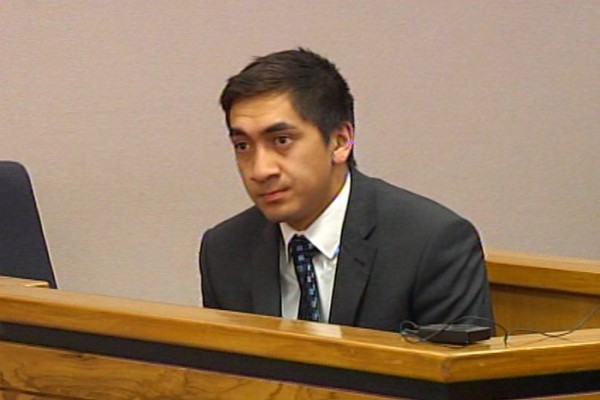
When the News of this travesty, reached the New Zealand public, of course there was an outcry!
Such a blatant contrast between how this High borne child was treated by the Courts compared to how the youth of commoners are dealt with… it is important to appreciate that this was not a case of Racial favouritism …. as some Pakeha have tried to make it out to be… but a matter of Class…. Favouritism for a member of the Social Political Elite.
Large numbers of ordinary Maori are getting convictions for burglaries and dinking driving virtually every day Courts are in session!
Maori as a race may indeed get mountains of Legal and political favours at the hands of our corrupt apartheid State…. Yet I have never herd of anyone being let off such Criminal charges simply on the basis that they are Maori.
I find it Fascinating that the King decided to throw his weight into this matter…. Very interventionalist…. Very hands on…. And I think…. Very short sighted.
His comments to the Judge are very revealing about how his mind works (or were they merely a clever ploy?)
They certainly embody something ominous about how our political system works.
It’s a system founded upon pretence.
Obviously… like most families would be… The Tainui King was embarrassed by his sons behaviour as it causes the community to question his parenting skills, and to wonder what sort of ethics and examples were the Elders of the house and family setting for this Boy to go so far astray, … and as such the King, instead of keeping his distance from the wheels of justice… like a good political leader ought, he instead transgressed ethical boundaries …. Throwing his weight about with the design to minimise the ‘loss of Mana’ he perceives a conviction would carry for his son… and himself… in the eyes of his tribe, other tribes, and the Nation as a whole.
This demonstrates either an arrogant contempt for the legal system, or at least a massive miscalculation… because the Kings Mana would have been greatly increased had he bravely stood aloof from his sons case, and expressed his respect for the Laws of the Nation, and acknowledged they apply to the Kingly Class as much as the lowliest tribesman.
Unfortunately it appears King Tuheitia suffers that all to common delusion of the High and mighty… that they inhabit a plane above the law… and that power may be used for personal legal advantage.
There can be no doubt that the King worded his letter to the judge on the carefully constructed advice of the QC Lawyer he had employed for his son’s defence, and the Judge obediently accepted the Legal charade it presents…. Rather than bravely disregarding the Letter of the King, and taking the higher Road of ‘Lex Rex’…. The Law is King.
The Judge took the low road… and went along with the carefully construed technicality…. that in the light of the Kings letter… it would appear that a conviction for these offences would result in a punishment out of proportion to the crimes.
That there is virtually no chance that this second son will ever have succeeded his Father adds weight to the commonly held perception that this whole defence and escape from justice, was farcical from beginning to end.
That is not the only aspect worth contemplating about this case.
There is plenty more worth consideration.
It is also striking that both the King and the Judge seem to be on a similar wave length as to the social implications as to the seriousness of being convicted of crimes, rather than merely being in fact guilty of the offences.
They seem to think that what matters most is the legal technicalities rather than the moral reality.
As if maintaining a clean record is more important than seeing justice served for crimes that were indeed committed…. we are supposed to somehow assume that by avoiding conviction, *removes the princes guilt* of having committed burglary… and drinking and driving… and that via this legal trickery somehow … not being convicted means he magically remains ‘fit to reign…. Ie that the King would thereby be able to seriously consider his wayward son to succeed him to the Tainui throne.
The shocking part of all this is surely what matters most is the actual innocence or guilt for the offence…. and that is something which cannot be washed away by a letter from a king to a judge.
This being so we should marvel at the nonsense of this whole line of defence employed by the King and the QC.
The mind numbing really is however that such games are in fact how our political machine functions!
What this non-conviction achieves is that it works to maintain the Charade of Righteousness the Ruling elite seek to project downward towards their subject populations… a Mask necessary to promote faith in their Leadership and character in the hearts and minds of the great unwashed, and elicit their willing submission…. duping the people into thinking their leaders are benevolent benefactors, when in reality their policies are Machiavellian, and they are in reality unscrupulous, and motivated to rule more by greed, the Baubles of Office, and social status, rather than a genuine concern for society.
This case in question demonstrates that a person’s criminal record…. or lack thereof can simply be a matter of wealth and social standing. or luck, or cunning, or how good a Lawyer you or your parents can afford.
One thing is certain… not having a criminal record is no proof of good character or worthiness to rule.
********************************************************

The Charade is universally employed the world over.
Having enshrined himself as Caliph in his newly conquered territories in Iraq, Abu Bakr Al-Baghdadi appears to the public in the pious garb of a righteous and devout Muslim leader designed to engender faith in his authority and rule.
********************************************************
Sometimes this Charade comes close to toppling the highest of VIPs from their perch, for example John Key was very quick to distance himself from his fellow ally John Banks… *once he was convicted* of Election fraud, yet he himself is prepared to tell Bare-face Lies to the people of New Zealand and being Neck deep in the Illegal spying scandal and raid on Kim Dotcom.
Hiding behind multiple ‘Memory lapses’, he arrogantly continues to govern rather than do the honourable thing and resign… simply because he has not been found guilty in a court of law for lying and complicity in the illegal activities of his Spies… whereas John Banks ‘Memory lapses’ have been exposed in the courts…. And he is Goneburger!
For John Banks… the Charade is finally over.

It is not just the Social elite whom carry on this Façade.
They have plenty of help.
The bulk of our society are ‘wilfully ignorant’. Ie they *don’t want to know* anything about this charade because often they support the shysters in power, and most importantly, they don’t want to admit their civilisation is largely built upon lies.
They plead ignorance!
They certainly don’t want to admit that to a very great extent the distinction between Saints and Sinners is a wholly artificial façade!
They are in on this charade of Self-righteousness just as much as their corrupt Leaders are.
They also like to kid themselves that they are righteous and civilised, and also dwell on that superior moral plane and have the right to look down their noses at sinners and convicted criminals …. on that same pretence that they themselves have not been *convicted* for their crimes.
Indeed if this was not so, it would not be so necessary for the Political Game players to put on their garbs of piety.
It does not mean the so-called ‘moral majority’ have not caused others grievous harm.
It does not mean they have never stolen anything…. never committed acts of violence… never committed frauds (told lies)… it simply means they have gotten away with their foul deeds.
… and this is enough to allow the average sinner to be puffed up with self-righteous vanity and bigotry.
“Judge not, lest ye be judged.
For with what Judgement ye judge, ye shall be judged: and with what measure ye mete, it shall be measured to you again”
Jesus Christ Matt 7vs 1-3
“Therefore thou art inexcusable, O man, whosoever thou art that judgest: for wherein thou judgest another, thou condemnest thyself; for thou that judgest doest the same things.”
St Paul Romans 2vs1.
And so it is that what parades itself as Civil Order does not bare scrutiny.
And many smart people know this, and decide to forsake society and to live ‘outside’ the constraints of law… They are Fools too, because the fact that society is corrupt does not mean there is no moral reality… no justice in the universe, or that it is wrong for society to convict *real* criminals.
Morality has Objective reality, and so an individual ought to walk in righteousness…. Even when the society in which he lives is savage and unjust.
This is easier said than done.
It is with this in mind that I do my best not to pretend to be ‘Holier than thou’… not to ‘fake’ being more of a Saint than I really am.
I do believe in living honestly and respecting the rights and liberties of my fellow man yet I am painfully aware of my own short comings.
The way I read the Bible… one of the very worst of sins, is Self-Righteous hypocrisy.
*The Charade*.
To Re-word the Kings letter….
“How could I even contemplate passing the Diadem to my Son if he has no ‘Cloak of Righteousness’ to fool the people into submitting to his Authority?
How would he be able to manoeuvre in the political arena unless he can fool the other players into considering him a man of virtue?
No that could never work.
A Criminal conviction will ruin everything.”
End of Part 2.
Tim Wikiriwhi.
There ain’t no easy way
This September 20, vote Aotearoa Legalise Cannabis Party for Truth, Freedom and Justice!
To vote ALCP, you’ll need to make sure that you’re registered to vote. Are you on the electoral roll? Enrol, check or update now!
But, dear readers, I do appreciate that you may not want to vote for the ALCP. In fact, you may not want to vote at all. Not voting at all is certainly better than voting for any of the other parties on offer! (With the possible exception of the revivified ACT Party.) And not voting is your democratic right. At least, it is in New Zealand.
Across the ditch, voting is not a democratic right, it’s a democratic duty! That’s right, in Australia voting is compulsory. But compulsion is tyranny! The day that voting becomes compulsory in New Zealand is the day I never vote again. I hope that day never comes.
If you don’t want to vote at all, you don’t need to be on the electoral roll, right? So how do you get off of it? There ain’t no easy way.
70,000 voters removed from electoral roll
About 70,000 local election enrolment packs have bounced back to Registrars of Electors marked ‘gone no address’.
The Electoral Commission mailed update packs to the 3.1 million people on the electoral roll at the start of July, to make sure everyone who’s eligible is correctly enrolled to vote in this year’s local elections.
“If you are one of the 70,000 or so voters whose pack has come back to us because you’ve moved house and not updated your enrolment details, you have been removed from the electoral roll, and won’t be able to vote unless you re-enrol,” says Murray Wicks, National Manager, Enrolment Services.
So one way to remove yourself from the electoral roll is to intercept your election enrolment pack, tell a little white lie by marking it “gone no address” and send it back whence it came. But telling lies is bad, even little white ones.
Death is another option, but it’s a tad extreme. How do dead people get removed from the electoral roll, anyway? I’m not sure. Across the ditch, at least voters are provided with a means to remove a dead relative. But here? I couldn’t find anything on the Electoral Commission’s website.
It looks like moving house is the only other option. And then hoping that the new residents of your old home return your election enrolment pack marked “gone no address”. Instead of simply binning it. Which is what I’d probably do …
I suppose the reason that there’s no easy way to get off of the electoral roll is that it’s compulsory to be on it. But why? Why does the government need a list of all eligible voters? I.e., a list of all adult New Zealanders not already in prison? Isn’t that what the Census is for? Sinisterer and sinisterer …


